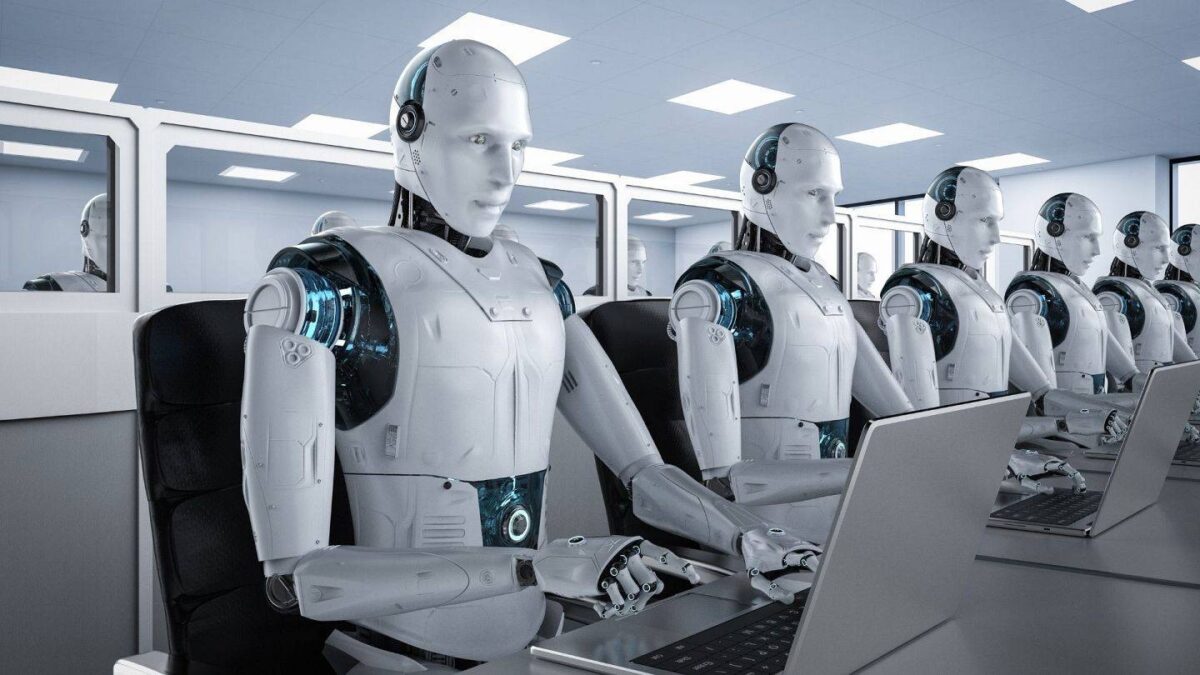Automation and technological advancements have long been a topic of debate, particularly concerning their impact on employment.
As industries continue to embrace automation to enhance efficiency and productivity, concerns arise regarding the potential displacement of human workers.
In this article, we explore the question: How many jobs will be lost to automation?
Post Contents
- 1 Key Statistics
- 2 How Many Jobs Will be Lost to Automation?
- 3 Automation Erased 1.7 Million Positions Globally
- 4 Employee Labor Cost vs Robot Cost
- 5 50% of Tasks Globally Can Be Automated
- 6 Machines Handle 30% of Tasks
- 7 Automation in the United States
- 8 More About Automation in the United States
- 9 Automation and Displacement
- 10 The World Economic Forum (WEF) and Automation Predition for 2025
- 11 Conclusion
- 12 Sources
Key Statistics
- An approximate of 63 million jobs will be lost to automation by 2040
- The rise of automation has led to the loss of 1.7 million manufacturing jobs in the world since the year 2000
- Since 1990, Employee labor costs have increased by 200% and robot costs have decreased by over 50%
- 50% of all global tasks can be automated but less than 5% can be fully replaced
- 33% of tasks could be automated in 60% of occupations
- By 2025, it is projected that humans and machines will share tasks equally, with a 50-50 balance
- Workers aged from 18 to 34 are the ones most affected by job displacements caused by automation
- Due to automation, 804,000 jobs on food preparation are expected to be lost
- Automation could displace 400 to 800 million people by the year 2030
- According to the World Economic Forum (WEF), automation will replace 85 million jobs by 2025, but create 97 million new jobs in return
How Many Jobs Will be Lost to Automation?

According to predictions, the rise of automation is anticipated to have a profound impact on the job market in the coming decades.
By the year 2040, an estimated 63 million job positions are projected to vanish as a result of automation.
Furthermore, industries that are particularly vulnerable to automation, including construction and agriculture, may witness a staggering 247 million job opportunities at risk.
Automation Erased 1.7 Million Positions Globally
Since the year 2000, around 400,000 manufacturing jobs have been eliminated by automation in Europe alone.
Similarly, the United States experienced a loss of 260,000 jobs due to the increased implementation of robotics in manufacturing processes.
Meanwhile, China, a major player in global manufacturing, saw a staggering reduction of 550,000 jobs as a result of automation.
An estimated 1.7 million positions in various industries across the world have been eliminated as a result of increased reliance on technology and industrial robots.
Employee Labor Cost vs Robot Cost
Since 1990, the expenses associated with employing human workers have surged by more than 200%.
In contrast, the cost of robots has experienced a remarkable decline, dropping by more than 50%.
This contrasting trend of rising labor costs and falling robot prices has become a cause for concern, especially within the manufacturing sector of the United States.
The compounding effect of these factors has created a sense of unease among American manufacturing workers.
50% of Tasks Globally Can Be Automated
According to a study, it has been revealed that almost 50% of the tasks performed by individuals worldwide have the potential to be automated using the technologies already available.
Nevertheless, only a small fraction, less than 5%, of job roles can be entirely replaced by automation.
Interestingly, in approximately 60% of occupations, a minimum of one-third of the tasks involved could be automated.
This finding suggests that there will be considerable transformations in the workplace, impacting all workers.
Machines Handle 30% of Tasks
Currently, machines handle roughly 30% of all tasks, with humans responsible for the remaining workload.
Nevertheless, this delicate balance is expected to undergo a profound transformation by 2025.
The WEF suggests that a 50-50 combination of human and machine labor will become the new norm, highlighting the increasing integration of technology into various industries.
Automation in the United States

According to recent studies, automation is having a significant impact on job displacement in the United States, particularly among workers aged 18 to 34.
This demographic is facing the highest risk of losing their jobs to automated systems and technologies.
A wide range of industries is experiencing this shift, with several job roles being particularly vulnerable.
For instance, it is estimated that approximately 804,000 jobs in food preparation are at risk of automation.
More About Automation in the United States
Here is a list of jobs that would be lost to automation among workers in the ages of 18 to 34:
- About 804,000 jobs on food preparation would be lost to automation
- About 567,000 jobs of retail salespersons would be lost to automation
- About 537,000 jobs of cashiers would be lost to automation
- About 519,000 jobs of stock clerks/order fillers would be lost to automation
- About 404,000 jobs of office clerks would be lost to automation
- About 313,000 jobs of cooks would be lost to automation
- About 251,000 jobs of secretaries and administrative assistants would be lost to automation
- About 179,000 jobs on bookkeeping, accounting, and auditing would be lost to automation
Automation and Displacement
The upcoming workforce transitions could be massive, requiring a significant number of people, ranging from 75 million to 375 million, to switch occupational categories and learn new skills.
Automation is projected to displace between 400 million and 800 million individuals worldwide by 2030.
While new jobs will be available, people will still need to navigate their way into these roles.
The extent of occupational shifts and skill acquisition depends on the adoption scenario, with the number ranging from less than 10 million to the higher estimates.
The World Economic Forum (WEF) and Automation Predition for 2025

According to the World Economic Forum (WEF), the Covid-19 pandemic has resulted in a significant loss of jobs for millions of people.
Unfortunately, the challenges don’t end there, as the WEF predicts that automation will further exacerbate the job market by displacing approximately 85 million jobs by 2025.
The organization, however, seeks to alleviate concerns by asserting that this shift will also generate around 97 million new jobs in the emerging tech-driven economy.
Conclusion
The impact of automation on job losses, particularly in the manufacturing sector, cannot be overlooked.
With statistics revealing that 1.7 million manufacturing jobs have been lost worldwide since 2000, it is clear that automation has significantly reshaped the employment landscape in this industry.
The global workforce must adapt to these changes by focusing on upskilling and acquiring new competencies that align with the demands of an automated world.
Governments, businesses, and educational institutions play a crucial role in facilitating this transition by investing in appropriate training programs and providing support for affected workers.






























